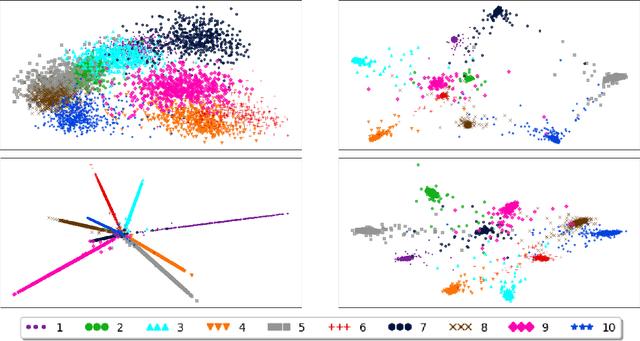Clustering-Oriented Representation Learning with Attractive-Repulsive Loss
Paper and Code
Dec 18, 2018



The standard loss function used to train neural network classifiers, categorical cross-entropy (CCE), seeks to maximize accuracy on the training data; building useful representations is not a necessary byproduct of this objective. In this work, we propose clustering-oriented representation learning (COREL) as an alternative to CCE in the context of a generalized attractive-repulsive loss framework. COREL has the consequence of building latent representations that collectively exhibit the quality of natural clustering within the latent space of the final hidden layer, according to a predefined similarity function. Despite being simple to implement, COREL variants outperform or perform equivalently to CCE in a variety of scenarios, including image and news article classification using both feed-forward and convolutional neural networks. Analysis of the latent spaces created with different similarity functions facilitates insights on the different use cases COREL variants can satisfy, where the Cosine-COREL variant makes a consistently clusterable latent space, while Gaussian-COREL consistently obtains better classification accuracy than CCE.
 Add to Chrome
Add to Chrome Add to Firefox
Add to Firefox Add to Edge
Add to Edge